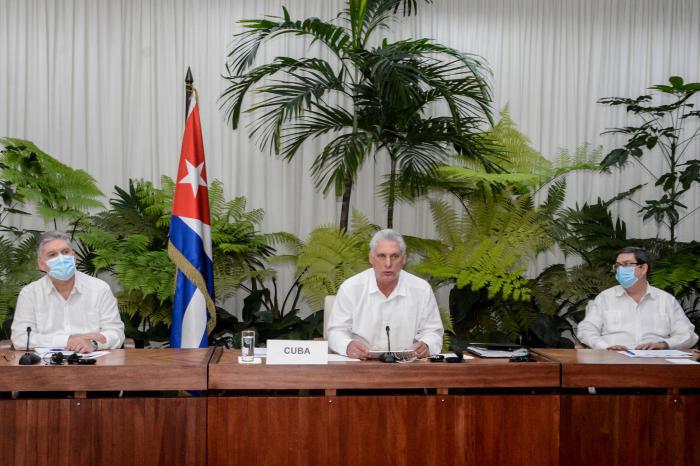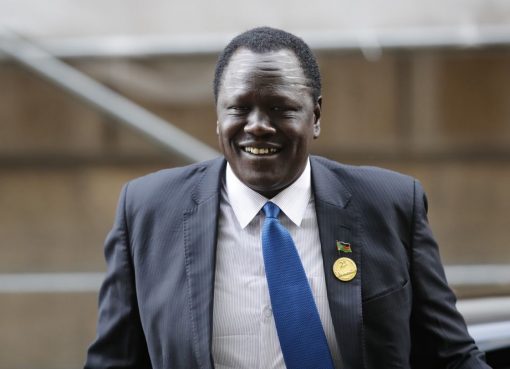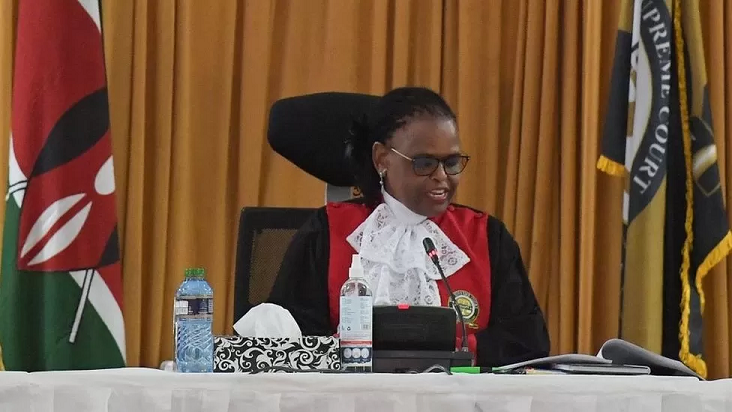World Bank Group, IAEA Formalize Partnership to Collaborate on Nuclear Energy for Development
World Bank Group and the International Atomic Energy Agency (IAEA) sealed an agreement to work together to support the safe, secure and responsible use of nuclear energy in developing countries.
The partnership agreement, signed by World Bank Group President Ajay Banga and IAEA Director General Rafael Mariano Grossi, formalizes multiple engagements between the two institutions over the last year, and marks the World Bank Group’s first concrete step to reengage with nuclear power in decades.
The agreement also reflects a new, broader approach by the World Bank Group to electrification—one that prioritizes accessibility, affordability, and reliability, while managing emissions responsibly.
With electricity demand in developing countries expected to more than double by 2035, this approach aims to help countries deliver the energy people need by enabling pathways that best fit their national context, including development objectives and Nationally Determined Contributions.
Nuclear energy provides continuous baseload power, enhancing grid stability and resilience.
Reliable baseload electricity is essential for job-generating sectors such as infrastructure, agribusiness, healthcare, tourism, and manufacturing. Nuclear power is also a source of high-skilled employment and stimulates investment across the broader economy.
In addition, it can adjust to changes in electricity demand and support frequency regulation, enabling greater integration of variable renewable energy sources.
In addition, it can adjust to changes in electricity demand and support frequency regulation, enabling greater integration of variable renewable energy sources. “Jobs need electricity. So do factories, hospitals, schools, and water systems. And as demand surges—with AI and development alike—we must help countries deliver reliable, affordable power. That’s why we’re embracing nuclear energy as part of the solution—and re-embracing it as part of the mix the World Bank Group can offer developing countries to achieve their ambitions. Importantly, nuclear delivers baseload power, which is essential to building modern economies,” said Ajay Banga.
The World Bank Group President, Ajay Banga, said the partnership with the IAEA marks an important step.
“I’m grateful to Rafael for his personal commitment and leadership in making this possible. Together, we’ll deepen our expertise, support countries that choose nuclear, and ensure that safety, security, and sustainability guide every step forward.” he said.
He said meeting that demand will require annual investment in generation of electricity, in grids, in storage will rise from $280 billion today annually to $630 billion annually.
“That scale is what drives our effort to connect 300 million people in Africa to electricity by 2030 with Africa Development Bank. That is why we developed a very clear path forward on delivering electricity as a driver of development,” said Banga.
IAEA Director General Rafael Mariano Grossi said the agreement is a milestone and the result of a year of joint work since President Ajay Banga kindly invited him to the World Bank Group Executive Board in Washington in June of last year.
“This landmark partnership, yet another sign of the world’s return to realism on nuclear power, opens the door for other multilateral development banks and private investors to consider nuclear as a viable tool for energy security and sustainable prosperity. Together, we can help more people build a better future.”
Under the memorandum of understanding, the IAEA will work with the World Bank Group to build knowledge related to the nuclear field, expand the World Bank Group’s understanding of nuclear safety, security, safeguards, energy planning, new technologies, fuel cycles, reactor lifecycle, and waste management.
The two bodies will work together to extend the lifespan of existing nuclear power plants, support developing countries in safely extending the life of existing nuclear reactors-one of the most cost-effective sources of low-carbon power-as many global reactors near the end of their original 40-year design life.
They have committed to advance Small Modular Reactors (SMRs) and to accelerate the development of small modular reactors (SMRs), which offer flexible deployment, lower upfront costs, and potential for wide adoption in developing economies.
Thirty-one countries currently operate nuclear power plants, which combined produce about 9% of the world’s electricity, amounting to almost a quarter of all low-carbon power globally. More than 30 other countries, most of them in the developing world, are considering or already embarking on the introduction of nuclear power and are working with the IAEA to develop the necessary infrastructure to do so safely, securely and sustainably.
“SMRs have great potential to cleanly and reliably power progress and fight poverty, but financing remains a roadblock,” Director General Grossi said.
What does the deal mean for countries like Uganda?
For many years, the Banks and players in the private sector have not been lending to countries intending to put up nuclear or atomic energy power plants. They were saying investing in nuclear energy was not something for international financing institutions. So many countries have not resorted to financing nuclear power plants in the absence of international longtime financing options.
The lack of financing has been part of the challenges for Uganda which has been planning to include nuclear energy as part of the energy mix and energy security.
The Ministry of Energy plans to put up 2000 MW nuclear reactor plant to be commissioned by 2031. Part of the preparations has been in collaboration with the International Atomic Energy Agency (IAEA) to proceed to the next stage of using nuclear for peaceful application.
IAEA Director General, Grossi said now it is possible that Uganda and other countries with nuclear ambition can get funding and support from the World Bank because this was not possible in the past.
“One problem we had in the past was the lack of financing. The fact that many clients in the global south, in the developing countries, even in industrialized countries need some financing support,” said Grossi.
“Let me tell you that when Ajay’s communication people were putting up a message that we were going to enter a partnership, I had calls from regional banks. They were asking me how you did it. I told them that I have been talking to you about it for many years. Now welcome to the club. Because this is a good club,” he said. Ajay Banga said support towards nuclear energy is part of the broader objective of ensuring that people enjoy their rights.
“We looked at where we can help to improve grids, where we could help to reduce emissions and where we could expand supply. And along the way, we are trying to clarify our approach in our ability to support geothermal, gas, solar, hydro, wind and all aspects of electricity generation” he added.
According to the World Nuclear Association, the first commercial nuclear power stations started operation in the 1950s. Nuclear energy now provides about 9% of the world’s electricity from about 440 power reactors. Nuclear provides about one-quarter of the world’s low-carbon electricity.
Nuclear is the world’s second largest source of low-carbon power. Over 50 countries utilize nuclear energy in about 220 research reactors. In addition to research, these reactors are used for the production of medical and industrial isotopes, as well as for training.
Nuclear technology uses the energy released by splitting the atoms of certain elements. It was first developed in the 1940s, and during the Second World War research initially focused on producing bombs.
In the 1950s, attention turned to the peaceful use of nuclear fission, controlling it for power generation. Civil nuclear power can now boast around 20,000 reactor years of operating experience, and nuclear power plants are operational in 31 countries worldwide.
-URN





